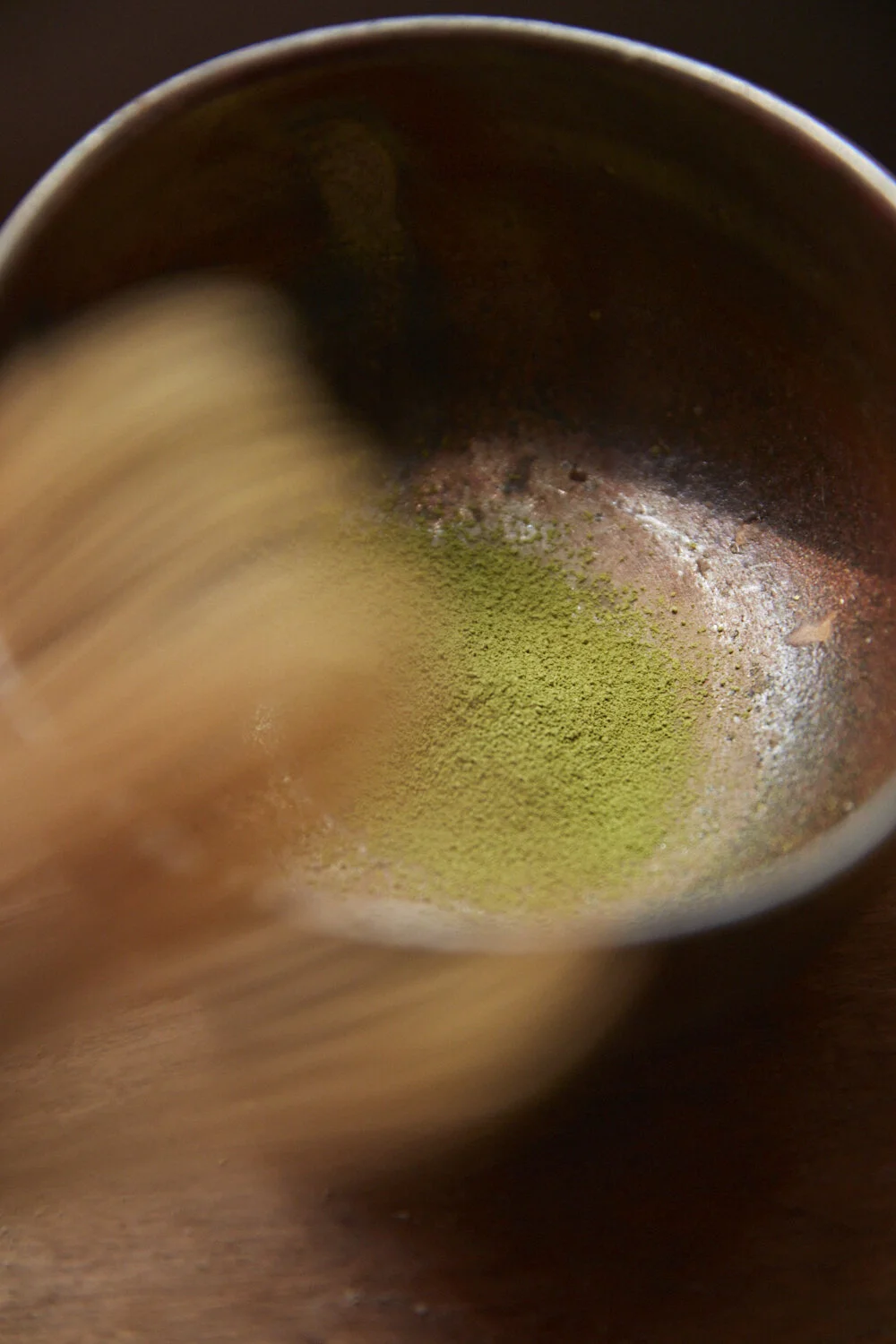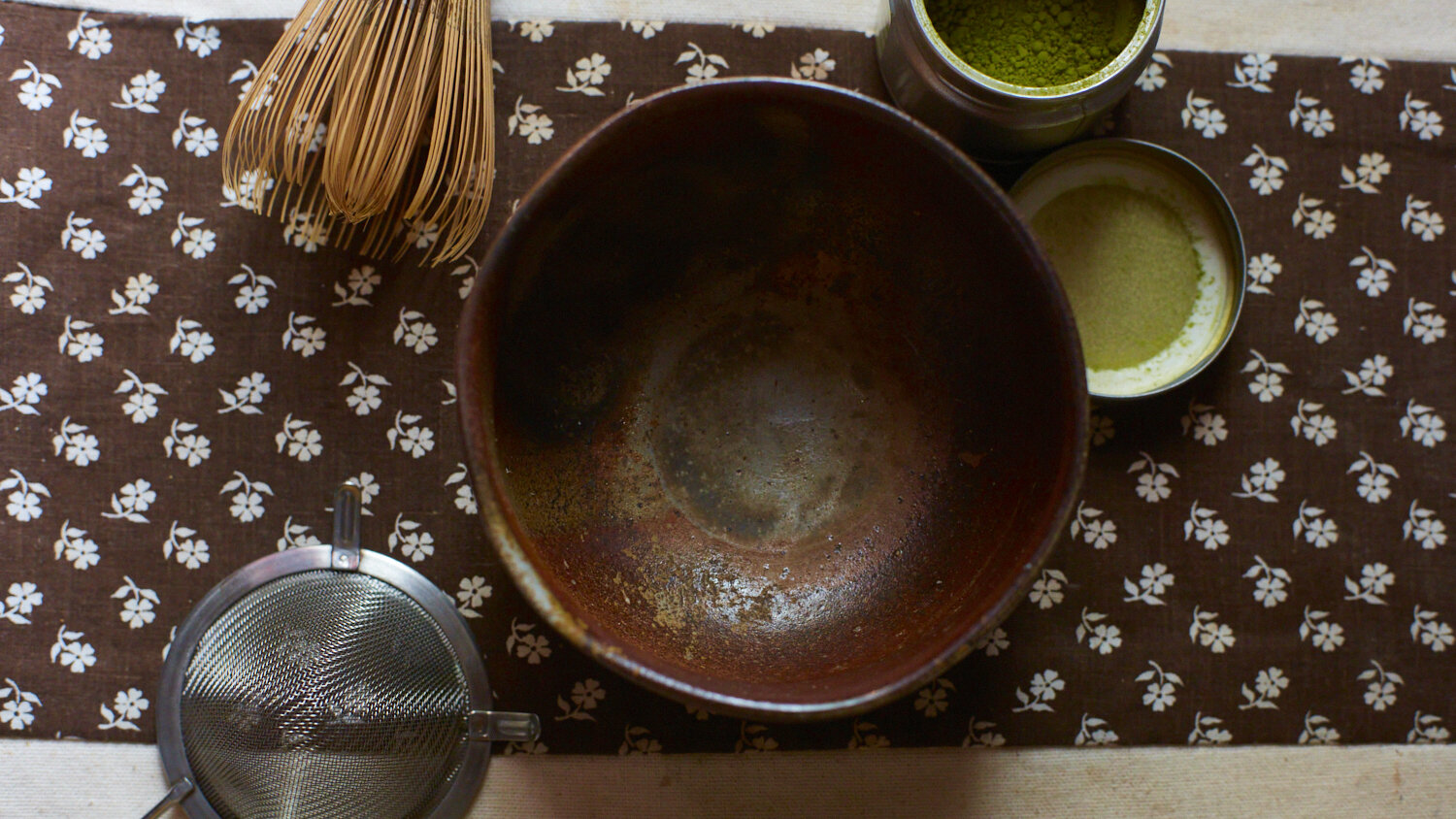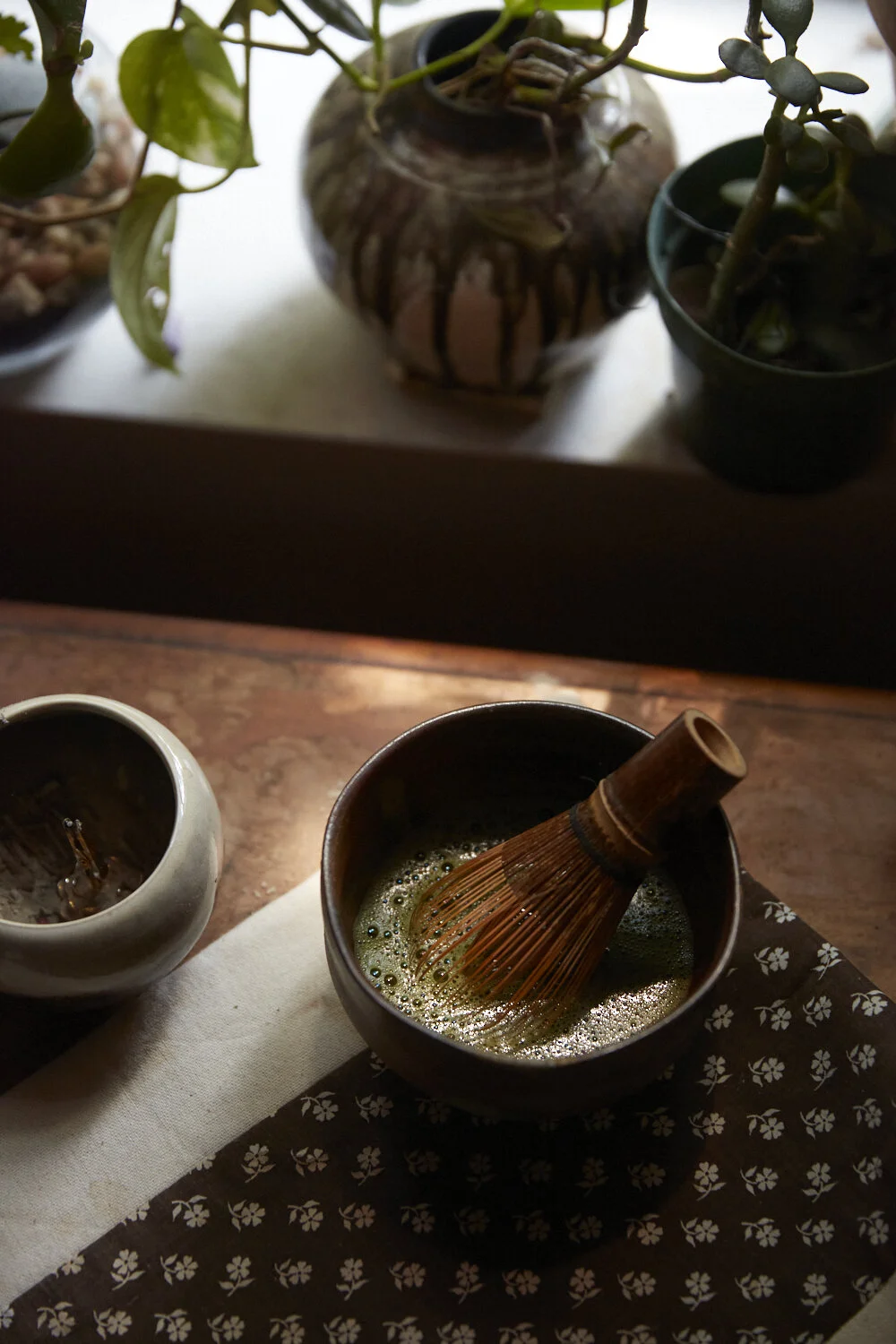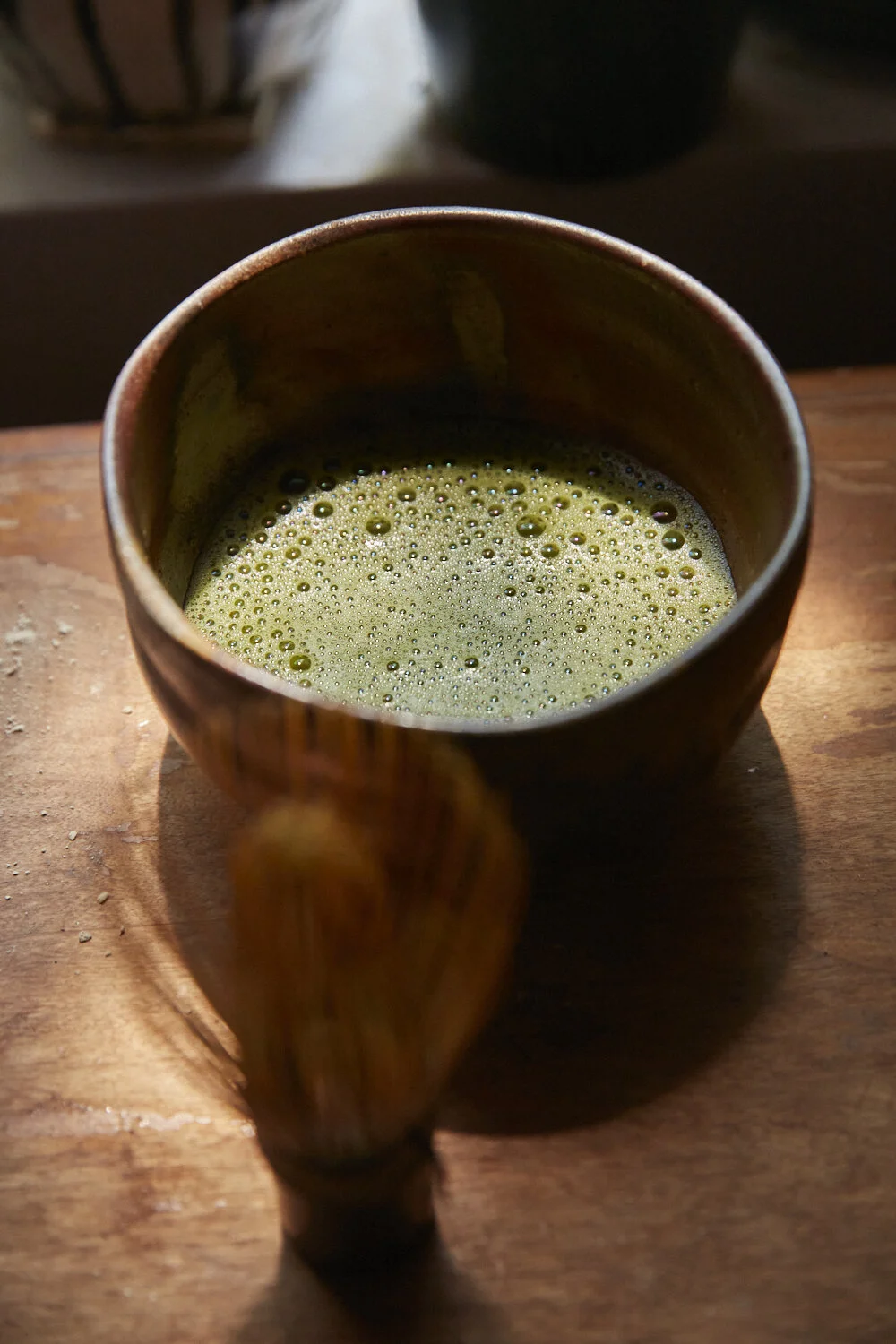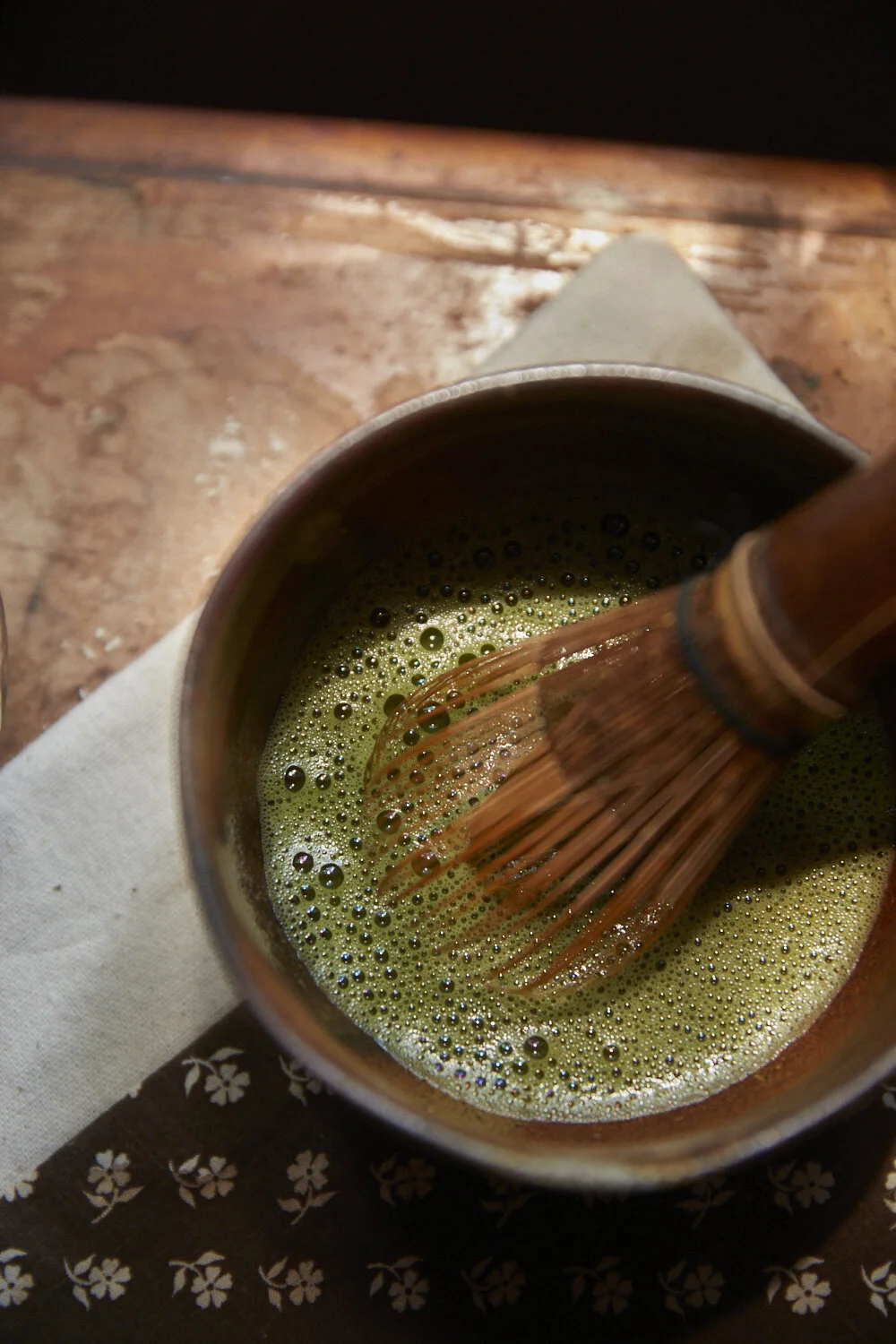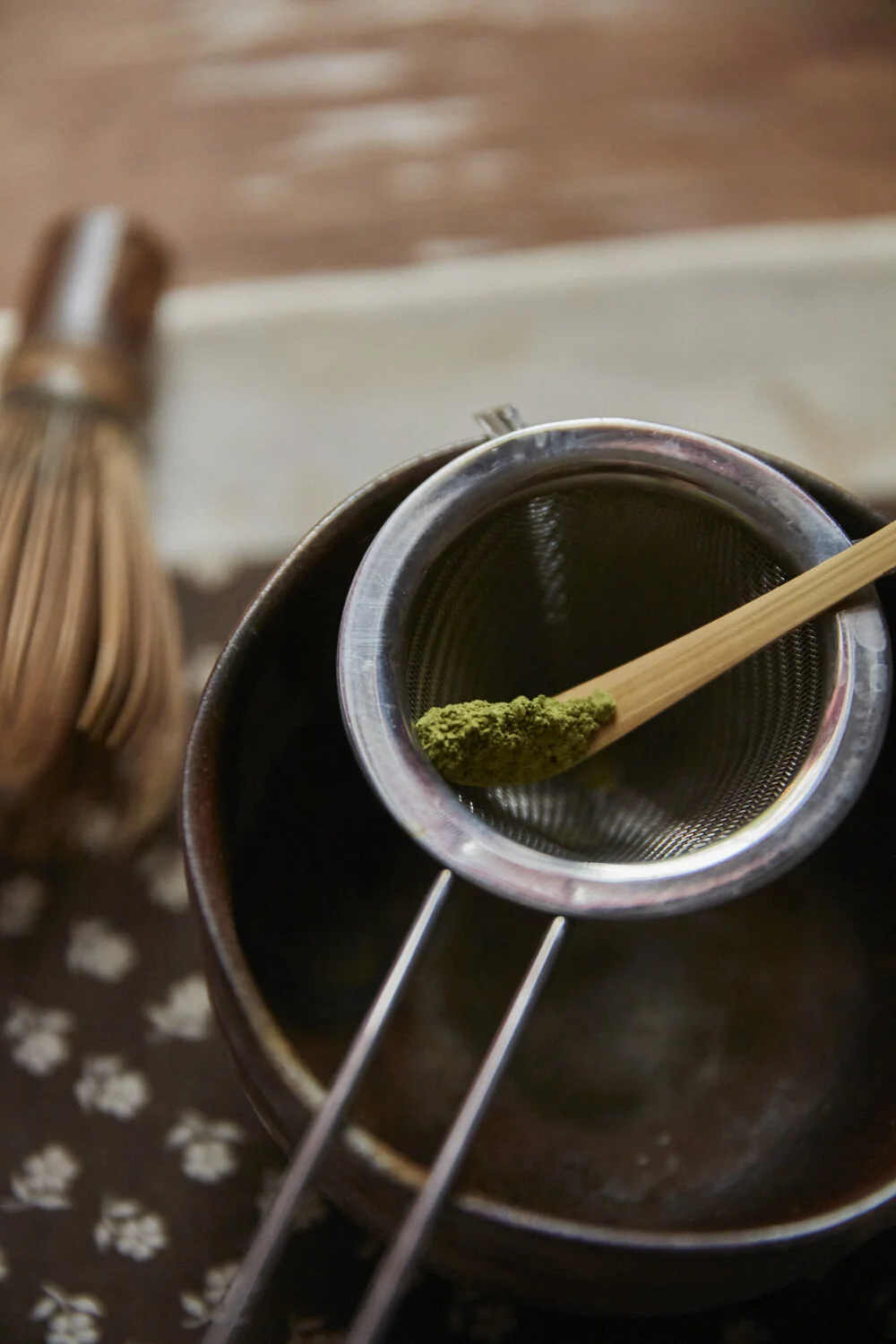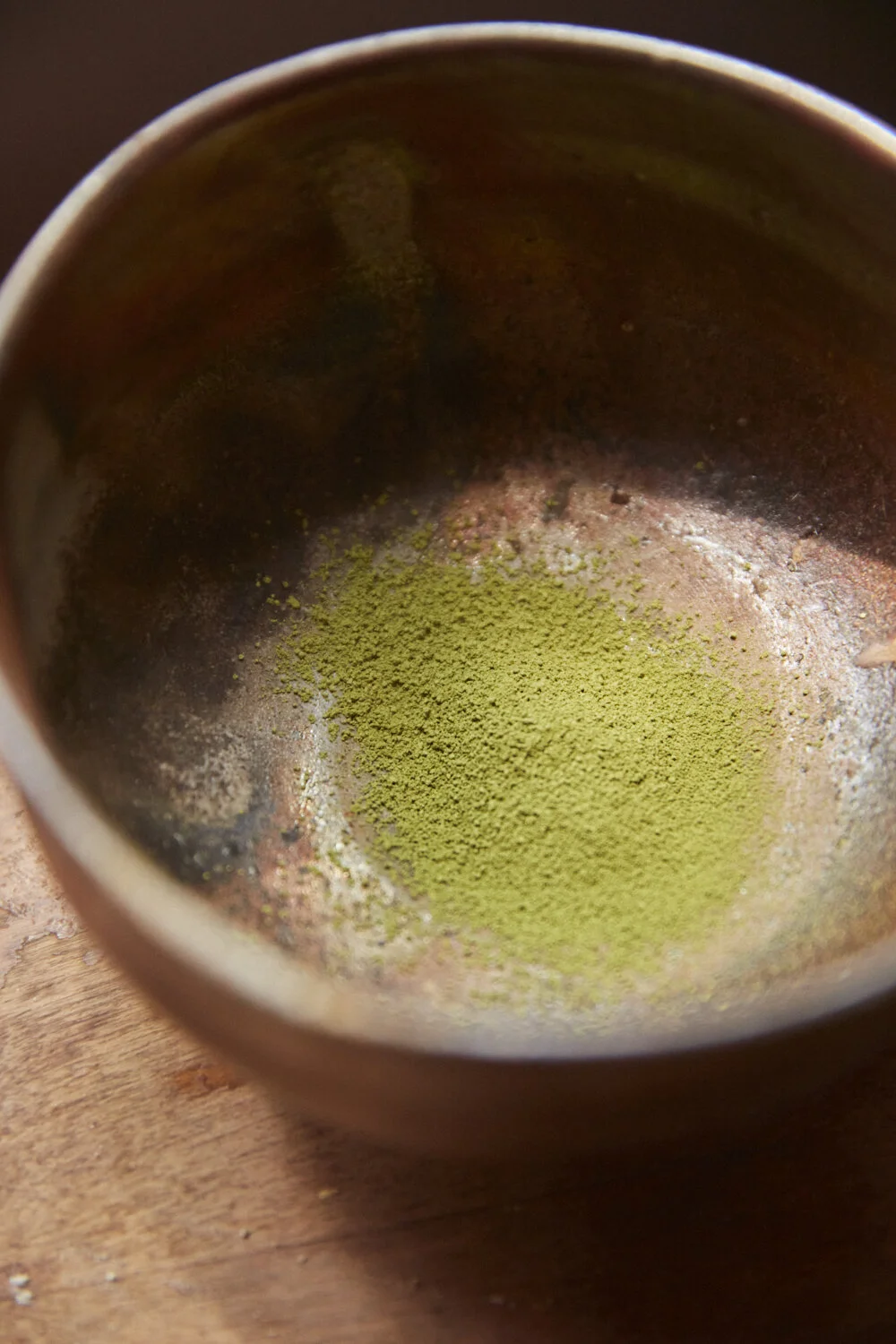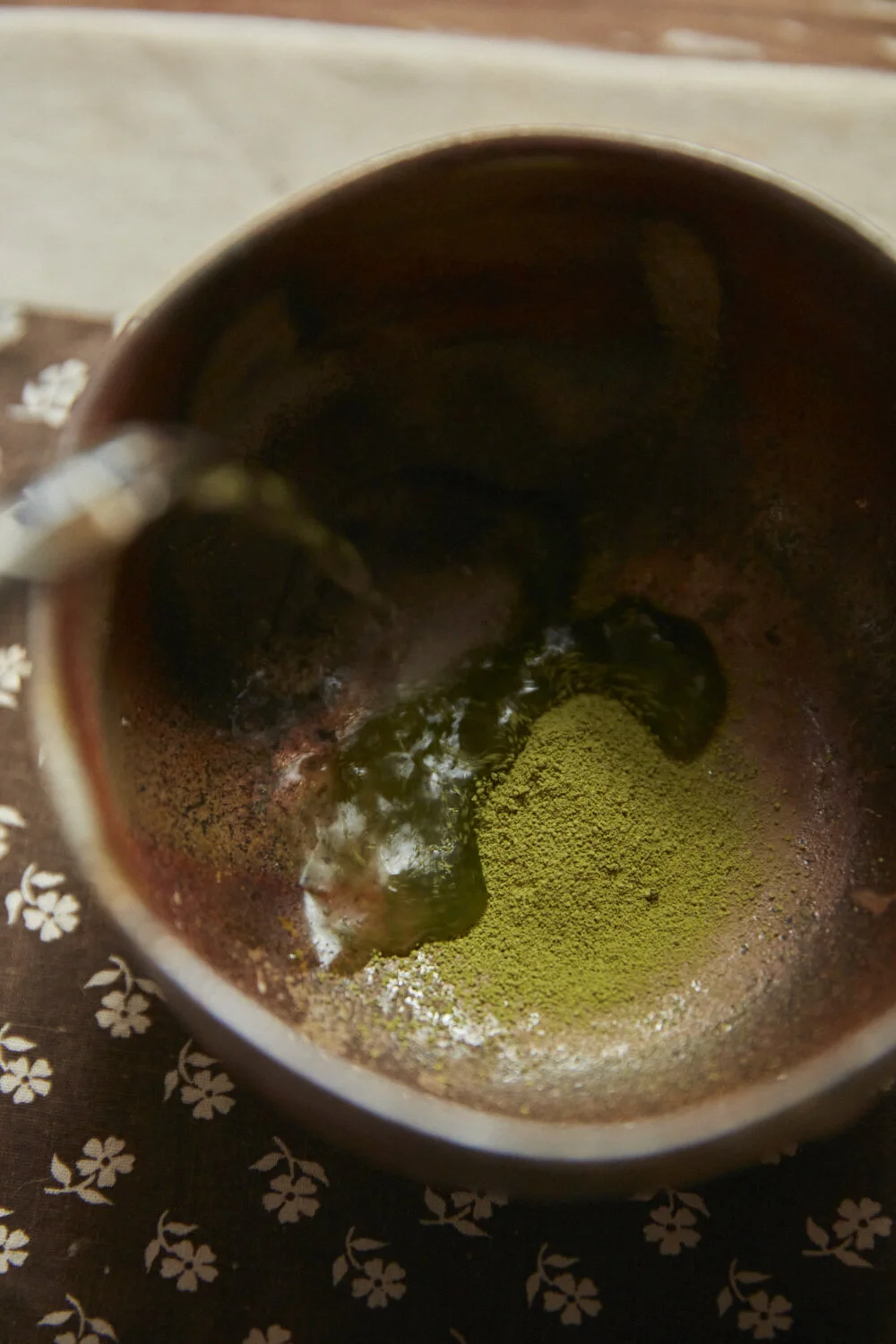The Matcha Plant: How Matcha is Made (Quick Guide)
Have you ever wondered how matcha is made?
Growing matcha plants is actually a really fascinating, multi-step process.
It sounds like a lot, but I promise it's easy to understand.
That's why I made this quick guide!
We'll go over some basics, like what matcha is, where it's grown, how it's grown, and then how it's processed.
What is Matcha?
Matcha is a green tea that comes from Japan.
It is stone ground into a fine powder, whisked into warm water, and then consumed.
A fun fact about all true tea is that it's all made from the camellia sinensis plant.
The 3 key things to know about matcha are:
It only comes from Japan
It's ground into a fine powder
And it's whisked with a bamboo whisk (not brewed)
What Does Matcha Taste Like?
Generally Speaking, matcha is bright, green vegetable tasting (vegetal), a little bitter, and deeply savory –
This savory note, signature to Japanese teas, is known as umami.
And because the tea leaves are suspended in the water after they're whisked, the flavor of the tea is quite intense.
Check out the Matcha Flavor Guide for more tasting notes and nuances.
Where is Matcha Plant Grown?
Plain and simple, true matcha comes from Japan.
A few different regions within Japan produce matcha.
But just like any fine-tuned beverage (say wine), growing location means a lot...
So some parts of Japan are known for producing better tasting matcha.
Check out our matcha terroir guide to get into all the geeky details.
Some famous matcha plant growing locations include:
Uji
Fukuoka
Shizuoka
Kagoshima
Aichi
The Tea Plant - Camellia Sinensis
The tea plant's scientific name is Camellia Sinensis.
It's a flowering evergreen bush (that sometimes grows into a tree).
Much like different kinds of agricultural products (such as tomatoes or grapes), the tea plant has many different varietals that taste different.
The leaves of the camellia sinensis plant are full of
Enzymes
Amino acids
Nutrients
And other compounds that change flavor when the leaf is manipulated by different processing techniques.
How is Matcha Plant Grown?
Matcha is a shade-grown green tea –
This means the tea plants are intentionally covered with shade cloth for roughly 20 days or more.
Why?
Great question.
It increases the L-Theanine content in the tea leaves, which produces the signature umami (savory) note that matcha has.
Generally speaking, matcha plants that grow in mountainous regions have different microclimates and have different nutrients.
Different growing conditions change the flavor of the resulting matcha.
How is Matcha Processed?
To become matcha, green tea leaves go through a multi-step process that's quite interesting and labor-intensive.
It's part of what makes it such a unique tea in terms of both flavor and experience.
1 - Picking
Like I mentioned before, the tea leaves used for matcha are intentionally shaded for about 20 days before picking.
This increases the L-Theanine content in the tea (which is an amino acid that's key to matcha's flavor and the feeling you get when drinking it!)
Matcha leaves are usually machine-picked but are sometimes still picked by hand.
2 - Steaming
One of the first steps after the leaves are picked is steaming.
Heat is applied to the leaves through a steaming process.
In the tea world, this process is referred to as ‘the kill green.’
Plain and simple –
This process stops the enzymes in the tea (that control chemical reaction, and thus flavor) from changing any further.
This halts the flavor of a tea and preserves the bright, fresh, green, savory notes of a green tea.
3 - Cooling
The leaves are then cooled before they're dried.
But great care is provided to make sure no extra moisture is involved.
4 - Drying
The leaves are then carefully dried –
Moisture control is extremely important in tea making.
Tea makers pay a lot of attention to the rate at which moisture leaves the leaf, as this will impact flavor.
5 - Vein and Stem Removal
After drying, the leaves then have their stems and veins removed.
The stems and veins lead to some unwanted bitterness in the final tea.
This is usually done by a machine.
6 - Storing and Freezing
At this step, the leaves are called “Tencha” - which is unground matcha.
Tencha is not necessarily meant for consumption as is considered an unrefined product.
The tencha is then sealed in airtight bags and stored in a freezer –
This ensures freshness and keeps out unwanted moisture.
7 - Blending
Most of the time, tea makers will blend different years of tencha to attempt to create a final tea that tastes similar year after year.
They do this by combining various tenchas for various years until they get a blend that is close as possible to the “ideal.”
This “ideal” is determined by the Master Blender and is a prestigious position in tea making.
Similar to the master blender in scotch making.
8 - Grinding
The final step in matcha production is grinding.
This grinding process is traditionally done with an Ishi Usu, a stone used for grinding tea into a very fine powder.
The traditional grinding process is quite slow.
It takes about an hour to grind 30 to 40 grams of Matcha – which is about the size of a small tin of Matcha.
Matcha is sometimes machine ground, which is much faster.
The resulting quality is changed by the speed of the grinding process.
Machine grinding typically heats the matcha particles and slightly denatures them.
So the taste will not be as fresh --
So Machine grinding is reserved for cheaper and bulk matcha.
How about Tencha?
Before matcha is ground into a powder, it's technically another "kind" of tea called tencha.
Which is just a loose leaf green tea that's then ground into a finished matcha powder.
All of the actual processing to the leaf is done in this form –
It becomes matcha later!
How to Make Matcha
Now that you know how matcha is made from a matcha plant into a consumable tea.
Here's a quick step-by-step guide that goes over how to make a perfect bowl of matcha!
There are a few ways to make great matcha,
But we'll just quickly go over the most common way.
It requires a few special pieces of teaware, but they're quite easy to find and I recommend them if you plan on drinking a lot of matcha.
Be sure to check out our matcha-making guide – 3 ways to prepare matcha (easy to traditional) – to learn how to make the best matcha!
5 Things You Need to Make Matcha
2-4 grams of matcha
Tea Bowl
Bamboo Whisk (Chasen)
Teaspoon
Matcha Sifter
4 Easy Steps to Make Matcha
Sept 1 - Prepare Your Water
Boil water and let it cool.
Step 2 - Add Matcha
Sift a generous teaspoon (which is about 2 grams) of matcha into your bowl
Step 3 - Add Water
Slowly add about 60 grams of your cooled water (175F/80C) into the bowl (do not use boiling water!)
Step 4 - Whisk, Whisk and Whisk
Move the chasen (bamboo whisk) back and forth or in a "W" shape to whip the tea into the water.
Do this until small bubbles/foam appear on the surface, about 20-30 seconds.
Tips: Try to keep the bristles from scraping against the bottom of the bowl!
And keep the whisk closer to the top of the bowl for a better foam.
MORE ON MATCHA

